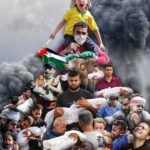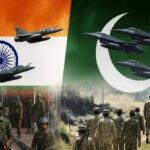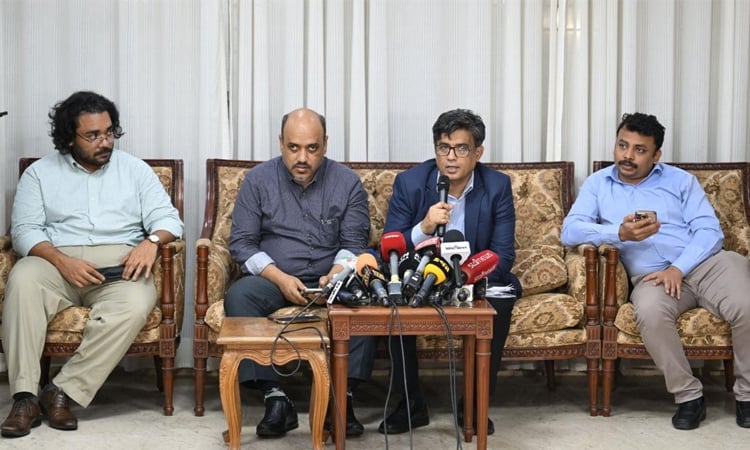Md. Arafat Rahman: Throughout the liberation war of Bangladesh in 1971, the Pakistani aggressors systematically killed the intelligent and free-spirited people of Bangladesh. At the end of the War of Independence in December, when the Pakistani forces realized that it was not possible for them to win the war, they started planning to weaken the newly formed country culturally, socially and educationally. According to that plan, on the night of 14 December, Pakistani forces, with the help of their local collaborators Razakar, Al-Badr and Al-Shams, brought the best children of the country out of their homes and killed them after brutal torture. This planned genocide is known in the history of Bangladesh as the intellectual genocide.
Intellectuals were killed in various massacres while in captivity. After the independence of the country, their mutilated bodies were found in Rayer bazar and Mirpur slaughterhouses. Many bodies could not be identified, many bodies were not found. According to the conventional notion, those who give mental or intellectual labor instead of physical labor are intellectuals. The definition of intellectuals given in the book Shaheed Buddhijibi Kosh published by Bangla Academy is: Intellectual means writer, scientist, painter, vocalist, teacher of all levels, researcher, journalist, politician, lawyer, physician, engineer, architect, sculptor, government and private employee, people involved in film and drama, social workers and cultural activists.
Since the formation of the undemocratic and unscientific state of Pakistan, the West Pakistani state system has been discriminating against Bengalis or East Pakistanis. They hurt the language and culture of the Bengalis. As a result, resentment began to accumulate in the minds of the Bengalis and the Bengalis started a political and cultural movement against this injustice. All these movements were led by intellectuals from all walks of life. They socially and culturally inspired the Bengalis with a sense of Bengali nationality. As a result of their cultural movement, the people gradually became aware of their demands and rights, which in turn led to their political movement. That is why intellectuals have been the target of Pakistan’s military rulers from the very beginning.
So from the beginning of the war, Pakistani forces started selectively killing intellectuals. Besides, when Pakistan’s defeat in the last phase of the war is just a matter of time, they make a list and kill the intellectuals. In this context, the argument given in the book Shaheed Buddhijibi Kosh is relevant and logical: – It is inevitable that it is the intellectuals who awaken the conscience of the nation, awaken the people through their writings, journalists’ pens, music and education. The first way to sterilize a nation is to make it ignorant. On the night of March 25, the process began abruptly, then slowly, and finally, from December 10 to December 15, knowing that defeat was inevitable.
The assassination of the intellectuals was planned along with the plan of Operation Searchlight on the night of March 25. Pakistani troops have been searching for and killing intellectuals during the operation. Many teachers of Dhaka University were killed on the night of March 25. However, much of the planned killing took place just days before the end of the war. During the war, the Pakistani army and its trained paramilitary forces, al-Badr and al-Shams, compiled a list of the names of these freedom-loving intellectuals. Major General Rao Farman Ali was the mastermind behind the operation on behalf of the Pakistani forces.
His handwritten diary is found in the Bangabhaban which was destroyed after independence where names of many killed and living intellectuals were found. A new curfew was imposed in Dhaka from 4 December. Preparations for the intellectual assassination began on 10 December. The main part of the plan was implemented on 14 December. The identified intellectuals, including professors, journalists, artists, engineers and writers, were forcibly abducted by the Pakistani army and its allies. About 200 intellectuals were abducted from their homes that day.
They were blindfolded and taken to torture centers in Mirpur, Mohammadpur, Nakhalpara, Rajarbagh and many other places. There they were subjected to horrific torture. They were later brutally killed at Rayerbazar and Mirpur. Even after the surrender and the formal end of the war, there were allegations of shelling by the Pakistani army and its allies. In one such incident, on January 30, 1972, renowned filmmaker Jahir Raihan died.
The notorious Al-Badr forces assisted the Pakistani military in compiling a list of the intellectuals and carrying out the assassination. According to the testimony given by the driver of the operation in-charge of the Badr forces, the mutilated bodies of several intellectuals were found from the Beel of Rayer Bazar and the Shialbari slaughterhouse in Mirpur, whom he had shot with his own hands. According to the information received, 991 of the martyred intellectuals were academics, 13 journalists, 49 physicians, 42 lawyers and 16 cultural personalities, artists and engineers.
From 5th March to 16th December, a number of eminent intellectuals were killed by the Pak army. Notable among them are: Dhaka University teacher Govinda Chandra Dev (Philosophy), Munier Chowdhury (Bengali literature), Mufazzal Haider Chaudhury (Bengali literature), Anwar Pasha (Bengali literature), Abul Khair (History), Jyotirmoy Guhathakurata (English literature), Sirajul Haque Khan (Education), Dr. ANM Faizul Mahi (Education), Humayun Kabir (English Literature), Rashidul Hasan (English Literature), Sajidul Hasan (Physics), Fazlur Rahman Khan (Soil Science), NM Moniruzzaman (Statistics), A Muktadir (Geology), Sharafat Ali (Mathematics), ARK Khadem (Physics), Anudvaipayan Bhattacharya (Applied Physics), MA Sadeq (Education), M Sadat Ali (Education), Santosh Chandra Bhattacharya (History), Ghiyasuddin Ahmed (History), Rajshahi University teacher Hobibur Rahman (Mathematics), Shri Sukharanjan Samaddar (Sanskrit) and Mir Abdul Quaiyum (Psychology).
Among the doctors was Prof. Mohammad Fazle Rabbi (Cardiologist), Abdul Alim Chowdhury (Ophthalmologist), Shamsuddin Ahmed, Dr. Humayun Kabir, Dr. Azharul Haque, Dr. Solomon Khan, Dr. Ayesha Badera Chowdhury, Dr. Kosir Uddin Talukdar, Dr. Mansur Ali, Dr. Mohammad Mortaza, Dr. Mofizuddin Khan, Dr. Jahangir, Dr. Nurul Imam, Dr. SK Lala, Dr. Hemchandra Basak, Dr. Obaidul Haque, Dr. Asadul Haque, Dr. Mosabber Ahmed, Dr. Azharul Haque and Dr. Mohammad Shafi (Dentist).
Among others were Shahidullah Kaiser (Journalist), Nizamuddin Ahmed (Journalist), Selina Parveen (Journalist), Sirajuddin Hossain (Journalist), ANM Golam Mustafa (Journalist), Altaf Mahmud (Lyricist and Composer), Dhirendranath Dutta (Politician), Ranoda Prasad Saha (Social Worker), Yogesh Chandra Ghosh (Educationist, Ayurvedic Physician), Jahir Raihan (Writer, Filmmaker), Meherunnesa (Poet), Dr. Abul Kalam Azad (Educationist, Mathematician), Nazmul Haque Sarkar (Lawyer), Lieutenant Colonel Moazzem Hossain (Ex-Serviceman), Mamun Mahmud (Police Officer) and many more.
An intellectual memorial has been set up in Dhaka to commemorate the killing of intellectuals. In 1993, the Bangladesh government decided to build a memorial on the site of this barbaric incident. The Ministry of Housing and Public Works and the Institute of Architects, Bangladesh jointly organized a national architectural competition for the design of the “Badhyabhumi Memorial”. The postal department has issued a series of commemorative stamps in memory of the intellectuals. In front is a black granite pillar in the water that represents sadness.
The intellectuals survive in the midst of the work they leave behind. As long as Bangladesh exists, the nation will remember these heroic children with respect.






